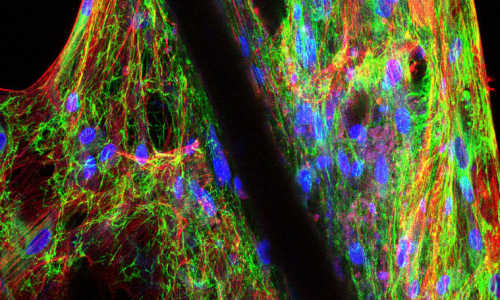Scientists at the University of East Anglia have made an important step in understanding how hearts are formed in developing embryos.
Lead researcher Prof Andrea Münsterberg, from UEA’s School of Biological Sciences
The heart is the first functioning organ to develop in humans, and correct formation is crucial for embryo survival and growth.
New research published today reveals how cells that form the heart, known as ‘cardiac progenitors’, are guided to move into the right place for the heart to begin to form.
It is hoped that the findings will help researchers better understand how congenital heart defects happen during the early stages of pregnancy.
Researchers studied live chick embryos and used a fluorescent dye to follow how prospective heart cells move together under the microscope.
Lead researcher Prof Andrea Münsterberg, from UEA’s School of Biological Sciences, said: “We have identified two important molecules which work together to control the correct migration of these cells. They do this by responding to signals, which help the cells navigate their way together – a bit like the embryo’s own GPS system. Once they have arrived in the correct place, they can begin to form the heart.
“Exactly how the cardiac progenitor cells are guided in their movement by these external signals is still unclear, but we have identified two key players that are important in this process.
“This research is particularly important because correct heart formation, at the right time and in the right place, is crucial for embryos to survive and grow.”
The research was funded by British Heart Foundation project grants.
‘Smad1 transcription factor integrates BMP2 and Wnt3a signals in migrating cardiac progenitor cells’ is published in the journal PNAS (Proceedings of the National Academy of Sciences) on April 5.
Story Source:
The above story is based on materials provided by University of East Anglia – Communications Office.





